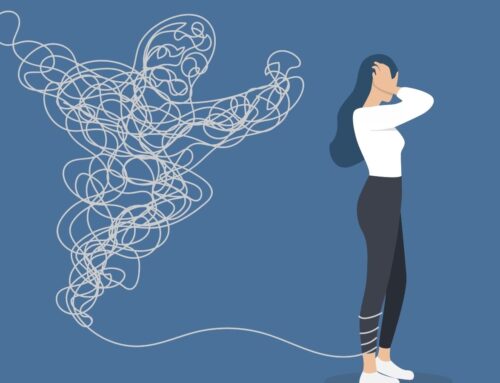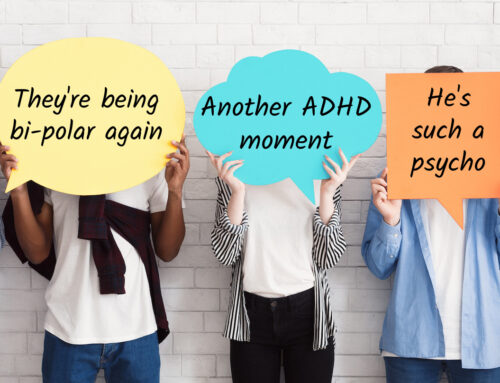Here’s a question for you: do you know what to do with your negative thoughts? Do you notice them right as they’re bubbling up, before they boil over and take control? Do you have tricks to wrangle them back down to a simmer so you can choose your next steps?
If you’d like to answer yes to any of these, then Dialectical Behavioral Therapy (DBT) may help. Like many other therapeutic modalities, DBT teaches you how to handle your unpleasant thoughts and feelings in a productive and effective way so that you can live a life aligned with your personal goals and values. What sets DBT apart is its focus on empathy.
DBT’s focus on empathy comes from its adoption of Eastern philosophies. In the Western world, we’ve been trained to think in an adversarial mindset. We are raised to understand that there can only be winners if there are losers, or that you can only be right if someone else is wrong, or that something can only be true if its inverse is false. In the west, this type of thinking is normal… but DBT teaches you to think in a completely opposite way. It teaches you to honor your truth, but also to go into every interaction curious to find out what the other side’s truth is. This is only possible when you learn that two thoughts that seem to contradict one another can both possess truth.
This concept makes up the first word of DBT: dialectical. A dialectic is a set of two seemingly contradicting ideas, which are actually both true. In DBT, you learn how to use dialectical thinking to accept that another person’s experience, even when it contradicts your own, is just as valid as yours. When you come to believe this, you realize that seeing someone else’s side of things will not jeopardize the validity of your own truth. On the contrary, it will open you to being curious about the experience of other people — which is precisely how empathy is cultivated. Once you see the truth that exists in someone else’s experience, you are better able to communicate how and why your experience differs from theirs.
Dialectical thinking also helps you turn toward yourself with greater empathy. Consider the two statements “my sadness feels unbearable” and “I can bear my sadness.” These statements seem like contradictions, right? However, they are a dialectic — they both are true at the same time. Sadness often feels unbearable, yet while you acknowledge the feeling of unbearableness, then you are, in fact, bearing it. The same goes for thoughts and feelings of all kinds. While you feel like no one loves you, you can also think of at least one person who does love you. While you feel your point of view is the only true one, you can also recognize that many points of view are true. When you learn to believe in the dialectical nature of things, you realize the temporality of emotion and the extent of your own resilience.
However, developing empathy and changing to a new way of seeing your experiences is no easy feat. And doing so becomes all the harder as the feelings grow more intense. That’s why another essential goal of DBT is to teach you how to catch the feelings before they get too big. To do this, DBT spends time teaching you mindfulness techniques. Mindfulness is simply a way of becoming more attuned to your body’s sensations, your thoughts, and your emotions. As you become more sensitive to your self, you gain the ability to sense when a difficult or unpleasant emotion is beginning to bubble up. By noticing it early on, while the damage it has the potential to cause is still far away — before you do anything that knocks you out of alignment with your values and goals, such as yelling at a friend or staying home from work.
As you practice DBT, you’ll get better and better at catching your feelings right as they’re bubbling up, quickly enough that you don’t get caught up in them. When you manage to do this, it’s easier to make sure that your next action is a productive one because you’re still clear-headed. Once you’ve caught the feeling, the “behavioral” part of Dialectical Behavioral Therapy comes in. In DBT, you learn to choose ways of responding to your thoughts and feelings that help keep you living a life that honors your values and goals.
But even seasoned DBT practitioners won’t catch those feelings early enough every time. Sometimes, you will get caught up in the feeling and, like getting caught in a riptide, it will feel like it’s pulling you under in a way that is terribly hard to cope with. For these moments, DBT teaches you recovery techniques, which are ways to slow down long enough to regain control of your thoughts so that you can get back to a place where you can make productive choices. Just like when you’re caught in a riptide, the way to get out of it is to stop fighting the current and float with it until it lets go of you. Only then can you take inventory of your surroundings and decide what to do. Recovery techniques can be as simple as running your hands under cold water to a bit more complicated, like journaling about your thoughts in a structured way.
Through mindfulness, empathy for others and for yourself, and understanding what behaviors will serve you best, DBT helps you keep pain (which, unfortunately, is inevitable. Pain is life’s ticket for admission) from turning into suffering (which fortunately, is avoidable! Suffering is the very difficult feeling of fighting against your reality). DBT will teach you skills for tolerating distress even while your emotions feel intolerable; it will teach you healthy ways to interact with others, even while you feel like you can’t; and it will teach you how to find your way out of the distress even while it feels inescapable.






